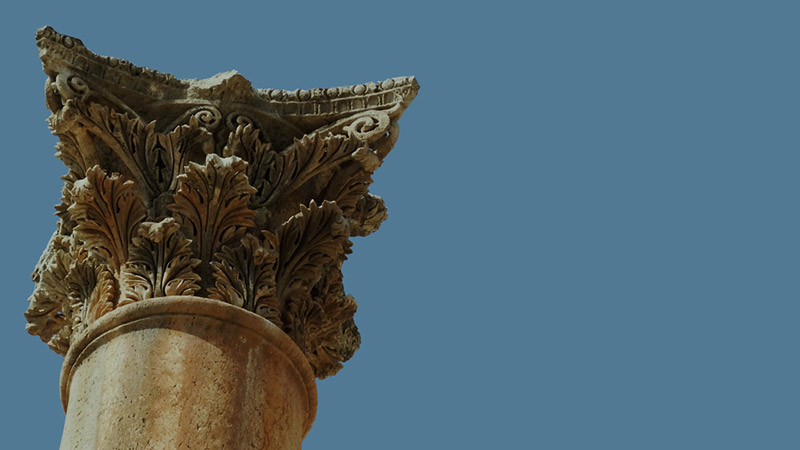More Results
Showing 12 of 251
Articles

No Greater Love
Korazin - The CityStudying the ruins of Korazin and other Galilean towns, scholars have pieced together a picture of family life in the first century. Korazin stood in the northwestern corner of the Galilee region, about three miles from the sea. ...
MORE
Not on Bread Alone
Not on Bread AloneIsrael is mostly rugged desert. The variety of Hebrew words for desert or wilderness indicates the significant role the landscape played in biblical history and imagery. For the Hebrews, the desert was far more formative than the...
MOREEncyclopedia

Olive Grove
Olive trees rarely reach 20 feet high. This ancient tree, with is gnarled trunk, is still very productive after 100 or more years of bearing olives. The root system of olive trees spreads wide to obtain the necessary moisture in Israel's relativel...
MORE
Olive Oil Processing
The cultivation and harvesting of olives was essential to Galilee's first-century economy. A community olive processing installation included an olive crusher, which cracked the olives in order to produce an initial flow of oil, and an olive press...
MORE
Olive Tree Imagery
The olive tree is one of the plants most frequently mentioned in the Bible. Scripture writers used olive tree imagery to describe Jesus' Jewish roots and the relationship of Jews and Gentiles.When an olive tree gets very old (often hundreds of yea...
MORE
Orthodox Triangle Area
Certainly not all people who lived in this fertile area were religious or even Jewish. But it is clear that most inhabitants of the sea's northwestern side were very religious;a fact supported by the many synagogues discovered there.Jesus conducte...
MORE
Ossuaries
Ossuaries Beginning shortly before Jesus' time, Jewish people began to practice reburials. After the flesh had decayed from the bones of a person who was buried, the bones were collected and placed in a small box, an ossuary, like the one shown he...
MORE
Pagan Gods and Beliefs
Pagan GodsSurrounded by pagan neighbors, God's people often encountered people who worshiped other gods. Baal, Asherah, and other fertility gods played a significant role during Old Testament times.By Jesus' day, the baals were replaced by Greek a...
MORE
Palm Sunday
The Passover For the Jewish people, Passover was more than a religious observance. It was the time of year when they celebrated liberation from Egyptian bondage.During Jesus' time, they also used this opportunity to express their longing for polit...
MORE
Passion Week
At the beginning of his last week, Jesus was greeted in Jerusalem as a heroic savior, someone to free the Jews from Roman authority. By the end of the week, Jesus was no longer seen as a hero. He was publicly ridiculed and disgraced as he hung on ...
MOREGlossary

New City Definition
During and after Jesus' time, the city expanded north, and many wealthy people built large villas in this new area of Jerusalem. Herod Agrippa walled it about thirty or more years after Jesus? crucifixion.
MORE
North Wall Definition
The Antonia fortress was located here. Built by Herod the Great, this fortress guarded the northern side of Jerusalem and held Roman troops during Jesus' time who watched the temple activities. Paul was probably brought to the Antonia after his ar...
MORE

















